Best BI: Microstrategy Vs. Tableau – Optimal analysis of reports is quintessential to the success of an organization. The influx of data in an organization means the greater need to handle it better. Thus the need for an effective data management tool cannot be ignored. You may want to compare Microstrategy vs Tableau.
Microstrategy Vs. Tableau: Overview
Both tools integrate reports, analyze data, and represent the data in a usable format for easy understanding, so they make decision-making easier.
Features Comparison: Microstrategy Vs. Tableau
Microstrategy is an enterprise business intelligence tool with interactive dashboards, which is compatible with desktop, mobile, and web interfaces. It boasts the premiere mobile BI platform.
If Mobile BI is what you are looking for, you may want to choose Microstrategy. On the other hand, a Tableau is an easy-to-use tool that easily connects you to data and creates informative reports. The tool is compatible with desktops and any browser-based interface.
Tableau platform is available in three versions, including Tableau Desktop, Tableau Server, and Tableau Online. This makes it easier for businesses to make the choice, depending on their specific needs.
The Microstrategy model is evident from the visual layout, with metadata repository linking to different devices, from Android to Mac, Windows, and iOS.
Tableau Desktop quickly does an ad-hoc analysis and retrieval of data. Microstrategy is not as capable as Tableau in terms of doing a quick ad-hoc analysis.
Integration: Microstrategy Vs. Tableau
Microstrategy is easy to integrate with the Microsoft Office suite of apps. The tool provides seamless integration between mobile and web business intelligence tools.
Tableau integrates with R models and Google Analytics. Tableau’s application programming interface enables you to integrate and extend the BI to fit the needs of your business.
Additionally, with Tableau, you can create dashboard extensions to ensure direct interaction of end users with data in third-party apps. With the BI, deep integration with third-party apps is a breeze.
Ease of use: Microstrategy Vs. Tableau
It’s the ease of use that sets Tableau apart from other BI apps. The tool is user-friendly, which means it is easier to introduce to your team. In general, Tableau can be used by anyone without requiring advanced technical knowledge.
The application quickly delivers visual interpretations of data. Tableau makes it easier and quicker to create dashboards from scratch, providing agility. This makes Tableau a leader in the field of analysis and visual results for a wider audience.
Microstrategy may be a little more complicated compared to the Tableau dashboard. It may be less useful for specific tasks that require pushing easily aggregated data points. The platform requires expertise for formatting and displaying results.
Tableau cannot be dubbed as a ‘full enterprise’ platform due to its existing analytical limitations. For extremely large data sets, it is better to combine the tool with other comprehensive big data handling apps.
In fact, Tableau’s performance is severely affected when querying large data sets, unlike Microstrategy. Another Tableau drawback in comparison with Microstrategy is that the in-memory calculations are slower.
On the other hand, Microstrategy relies on the depth of its tools and versatile relational database apps. A software development kit that comes with the application makes it easy for users to customize the tool. Users can seamlessly handle large and diverse sets of data and provide enterprise-wide handling and analysis.
Price Comparison: Microstrategy Vs. Tableau
Tableau involves one-time payment. Users can opt for an annual subscription. Tableau has come up with new monthly subscription prices, including Personal $35; Server, $35; Online, $42, and Professional $70.
With the Personal Edition of Tableau Desktop, users can connect to Google Sheets and Microsoft Excel. The Professional Edition of Tableau Desktop costs $70/ user/month. With the professional edition, users can connect to multiple data sources, including apps, databases, and files.
Microstrategy provides the option for monthly payments. There is an option for quote-based payment. Web and Mobile cost $600/ user and Server costs $1,200/ user.
Conclusion: How Microstrategy and Tableau Are Similar?
Both Tableau and Microstrategy provide beautiful data analytics to enable better business decision-making. These BI apps are committed to innovation and serve medium and large enterprises. Both tools provide an equal number of visualizations and exact the same features. Tableau and Microstrategy provide numerous data source connectors to enable connection with any data source.
Conclusion: How Microstrategy and Tableau Are Different?
Microstrategy is compatible with Linux, Windows, and Macintosh OS environments. Tableau Desktop has a web-based version and also supports Windows and Macintosh OS environments.
Microstrategy gets an upper hand over Tableau in the field of analysis and reporting standardization in a comprehensive structure handling big data. On the other hand, Tableau is the best choice if you are looking for the best visual representation of the analyzed data. It is described as a self-service data discovery app.
Additionally, with Tableau, it is less complicated to work with data from different sources to build analysis with the software’s data blending capability. In Microstrategy, users find it easier to implement security. This allows the admin to integrate data abstractions to different users.
So when it comes to choosing a business intelligence solution for your organization, you may want to compare the two services keeping in mind your specific needs. Each solution has different strength, which can be tapped depending on your needs.
If you still need help with choosing the right BI from Microstrategy vs Tableau to strengthen your team, come in touch with ITQlick experts – your ultimate source of reliable software recommendations. We will guide you through the process to make the right choice.
